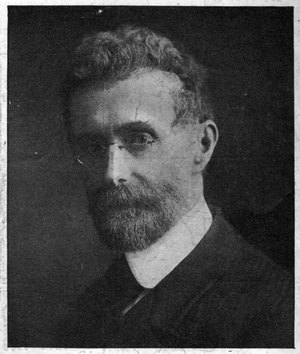 The subject of our sketch represents a branch of musical endeavor which deserves the greatest possible encouragement. To Mr. Nevin, music is first of all a work of love. Fate cast him in a mercantile line, but his personal tastes have kept him interested in music, and he has been an earnest and conscientious student of the art since his boyhood.
The subject of our sketch represents a branch of musical endeavor which deserves the greatest possible encouragement. To Mr. Nevin, music is first of all a work of love. Fate cast him in a mercantile line, but his personal tastes have kept him interested in music, and he has been an earnest and conscientious student of the art since his boyhood.Mr. Nevin was born in 1850, at Shippensburg, Pennsylvania. He was educated in the public schools and in the Cumberland Valley State Normal School. In 1883 he went to Lafayette College. (For further particulars see “Who’s Who in America.”)
He studied music principally with Miss Julia E. Crane. Miss Crane has been the pupil of many of the foremost teachers of our day and was for some time under the tuition of Manuel Garcia, the famous voice teacher. Her educational work has been a potent factor in the musical life of America. Under Miss Crane’s instruction Mr. Nevin developed his baritone voice and studied choir conducting and choral work At the same time he was privately pursuing his studies in harmony , and composition.
Mr. Nevin’s practical work as a conductor, organizer of singing societies and as a church singer led him to a realization of the requirements of church and choral music. He also appreciated the fact that much of the church music sung in choirs was mediocre and unsuited to the religious of the churches of to-day. Consequently he devoutly endeavored to supply the needs of the choir loft and has been successful in a manner far beyond his original hopes. In this he has been greatly assisted by his wife who has written the words to some of his best-known compositions. Mr. Nevin’s music is melodious and always singable. Some of Mr. Nevin’s secular compositions have also met with wide popular favor.
Among many of Mr. Nevin’s successful vocal works are “Come All Ye Jolly Shepherds” (mixed voices), “Flower of Dumblane” (solo), “O, Hush Thee My Babe” (mixed), “It Was a Lover and His Lass” (solo), “The Lord is My Shepherd” (mixed), “Sands of Dee” (mixed), “O, Captain, My Captain” (solo), “Star and the Child” (solo), and his cantatas “The Adoration” and “The Crucified.”



